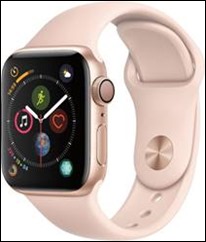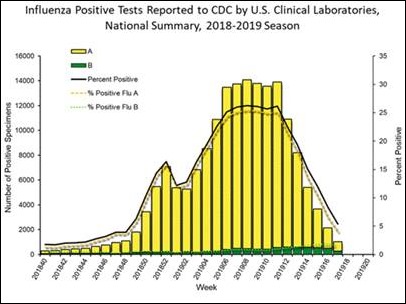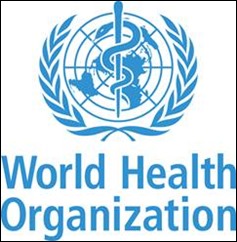Curbside Consult with Dr. Jayne 6/10/19
As much as clinicians complain about EHRs, they can be powerful tools for data analytics. I’ve worked with a number of organizations that have embraced the ability of the EHR and practice management systems to help them understand why their schedules are backed up and also to implement strategies to improve things. Sometimes it’s a patient panel that’s too big, or inefficient scheduling, or getting a late start in the clinic every morning.
Now there’s new data that shows that appointment scheduling isn’t just a point of frustration. It can actually impact patient care. The authors looked at screening for breast and colorectal cancers and whether the time of day the patient was seen makes a different on whether the patient actually receives a screening referral. Patients who were seen in the morning were more likely to be seen than those with afternoon appointments. The study looked at family medicine and internal medicine practices in a variety of settings in New Jersey and Pennsylvania during 2014 and 2016. Acute and sick visits were excluded, so these were times that physicians should have been managing preventive care or chronic health issues.
The authors cite factors such as lack of time (possibly due to physicians being behind schedule) and “decision fatigue” as potential causes. The latter occurs when clinicians are less likely to have screening discussions because they have already had similar discussions multiple times earlier in the day. There’s also concern that patients who decline screening earlier in the day may make it less likely for physicians to bring it up in later appointments. Additionally, patients who are seen later in the day may also be under time pressure and may not want to discuss screenings.
The authors recommend using non-physician care team members to assist in addressing screening gaps and adjusting clinic workloads so that physicians can better focus on patient care during visits. It’s tempting for physicians to have a knee-jerk reaction to these recommendations because they are used to being the primary point of contact with a patient. I continue to come across physicians that are resistant to team-based care even when they are stressed and burned out.
There are plenty of patient engagement solutions out there that can assist with encouraging patients to receive preventive services, whether they are blast messaging through an existing patient portal, email, or text system or novel apps designed specifically for patient engagement. Those reminders can reach patients when they’re not preoccupied with other discussions during an in-person visit. Of course, patients might be just as likely to blow off those asynchronous reminders, but it’s another tool for practices to use to try to better address patient needs in a way that doesn’t impact schedules.
These types of issues are also part of what primary care transformation programs are trying to address. Initiatives such as Comprehensive Primary Care Plus (CPC+) are designed to provide additional care management payments that would include coverage for these interactions. Other programs such as Primary Care First are designed to reduce administrative burdens and make payments more streamlined which theoretically should increase the capacity for practices to deliver patient-centric services.
Of course it will take time to gather data on these programs. The CPC+ program has been live for a little over a year and initial reports on the program indicate that it’s really too early to determine what kind of impact the program might have on overall spending related to clinical outcomes.
It’s not just screening services that are impacted by the duration of the workday. The study notes that other investigations “have found higher rates of inappropriate antibiotic prescribing and opioid prescribing later in the day. In each of these studies, behaviors improved slightly after lunch (a short break for most clinicians).”
Organizations that want to tackle issues like time pressure and decision fatigue need to be careful in how they address this with their providers. One author recommended that physicians set aside time for breaks throughout the day to address the problem. This is easier said than done in office settings where providers often don’t have time to take a break to eat a meal, use the restroom, or interact socially with staff because they’re just trying to grind their way through the day. Offering those kinds of suggestions without fully understanding the problem can come off as patronizing or antagonistic. Personally, the last time I ate food during a 12-hour shift that did not involve nibbling while charting was never.
Physicians are also becoming increasingly resistant to the idea that they are responsible for changing patients’ behaviors. Physicians are supposed to motivate patients who appear tired or uninterested in a conversation about screening. The study’s author commented that patients need to be convinced that their decisions have an impact and that physicians need to think about how to best organize discussions around patients’ health.
I know I’m not alone when I admit that I’m tired of trying to persuade patients who don’t give a damn about their health that they need to take charge of, or at least get involved in, their own health. There’s a dearth of personal responsibility in our society compared to what I’ve experienced in healthcare in other parts of the world. It feels like we are no longer practitioners of the art of medicine but cheerleaders, salespeople, and at times parent-substitutes for grown adults who should be able to at least participate in their own well-being.
I think this is a major part of why we see primary care providers defecting to the urgent care or emergency department care environments. They are not expected to manage anything beyond the acute issue in front of them. Providers who gravitate to direct primary care or concierge practices are at least being paid better for their time and effort, so there is higher satisfaction among my colleagues who have made that jump.
In the mean time, the study is important to illustrate that many variables affect patient care and we can identify ways to address some of them. There are plenty of relatively simple solutions out there that practices are still resistant to implement.
I was in an office the other day where the entire staff walked in two minutes to opening time. They were waiting outside because they’re not allowed to clock in before 7:57 a.m. There is no way that any of them were prepared for patients arriving at 8 a.m., but such was the office policy. Until we begin to tackle those obvious issues, addressing the more subtle ones will remain out of reach.
What do you think about decision fatigue, appointment schedules, and personal responsibility? Leave a comment or email me.

Email Dr. Jayne.





















"A valid concern..." Oh please. Everyone picks the software they like and the origin of that software is an afterthought.…